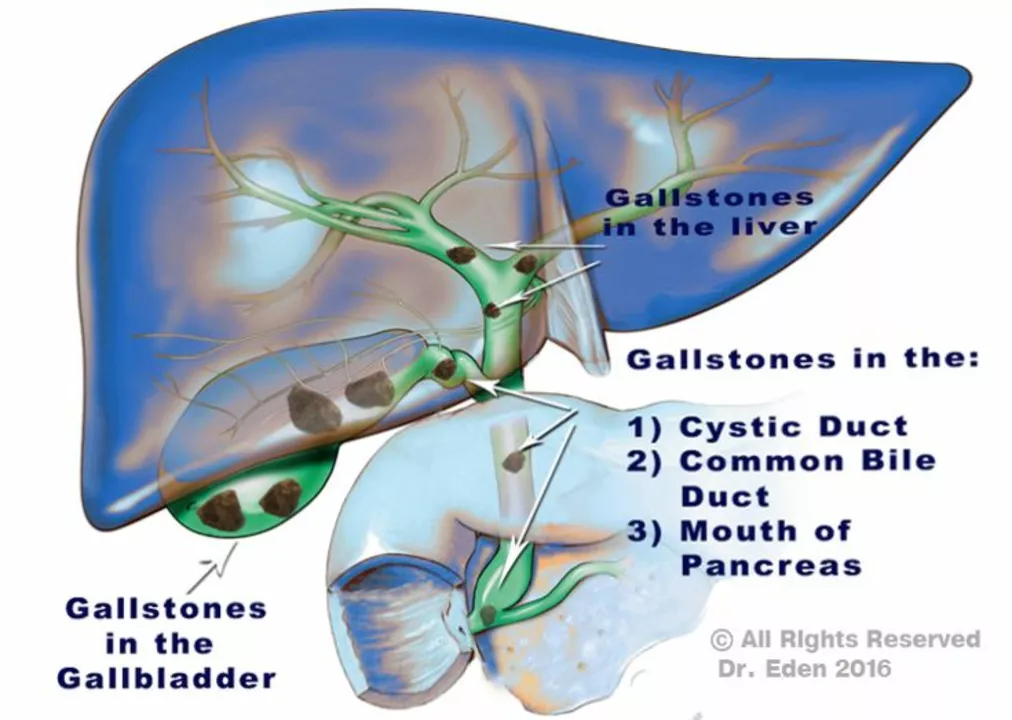Gallbladder Cleanse: What Works, What’s Risky, and Safer Choices
Trying a gallbladder cleanse? People often want to flush out gallstones or feel lighter, but many “cleanses” online are unproven and can be dangerous. This guide cuts through the myths, explains real options, and tells you when to get medical help.
First: what a gallbladder cleanse usually means. The idea is to use strong oils, lemon juice, Epsom salts, or herbal mixes to force stones out of the gallbladder and bile ducts. Promoters claim you’ll pass dozens of green or black “stones” after a cleanse. Those claims sound dramatic, but they don’t match good medical evidence.
Why most popular cleanses are risky
Forcing a stone or sludge through the bile ducts can block the duct and cause severe pain, infection, or pancreatitis. Doctors warn that sudden movement of gallstones can lead to emergency situations. Also, the lumps people find after cleanses are often congealed oil or soap-like residue—not real gallstones. So the visible “results” are misleading and may give a false sense of safety.
Who should never try a cleanse? If you have known gallstones, severe belly pain, fever, jaundice, or a history of pancreatitis, don’t do home cleanses. Pregnant people and those with chronic illnesses should avoid them too. Always check with a healthcare provider first.
Safer, evidence-based alternatives
Simple lifestyle moves help more than dramatic cleanses. Eat more fiber from fruits, vegetables, and whole grains. Choose healthy fats like olive oil in moderate amounts instead of very fatty or fried foods. Stay hydrated and keep a healthy weight—rapid weight loss raises gallstone risk, so lose weight slowly. If you have symptomatic stones, a doctor may recommend medication such as ursodeoxycholic acid to dissolve certain cholesterol stones, but this takes months and requires medical supervision.
If you have repeated gallbladder attacks or complications, surgery to remove the gallbladder (laparoscopic cholecystectomy) is a standard, safe option with quick recovery for most people. Ultrasound is the usual test to detect stones; blood tests check for infection or bile duct injury. If you have sudden severe pain, fever, yellow skin, or nausea with vomiting, seek emergency care—those are signs of a blocked duct or infection.
Want a practical checklist? See your doctor first, get an ultrasound if you have symptoms, avoid oil-and-lemon cleanses, try diet and hydration changes, and follow medical advice on medications or surgery. A careful, medical approach keeps you safe and usually gives better results than any internet cleanse.
A few extra tips: don’t fast or do extreme diets to trigger a cleanse — sudden fasting can increase stone formation and provoke attacks. If imaging shows biliary sludge rather than solid stones, your doctor may suggest observation, dietary changes, or a short trial of medication. For stones stuck in the common bile duct, specialists can remove them with an ERCP procedure that clears the duct without major surgery. Ask your provider about follow-up care and how to adjust your diet long term to lower the chance of new stones forming.

The Gallbladder Cleanse: Fact or Fiction in Treating Gallstones?
- by Colin Edward Egan
- on 29 May 2023
In my latest blog post, I explored the controversial topic of the gallbladder cleanse and its effectiveness in treating gallstones. After researching various sources, it seems that the medical community remains divided on this issue. Some believe that a gallbladder cleanse can help to flush out gallstones, while others argue that it's simply a myth. As someone who values evidence-based practices, I would advise my readers to consult with their healthcare provider before attempting any type of cleanse. It's important to remember that everyone's body is different and what may work for one person may not be suitable for another.
